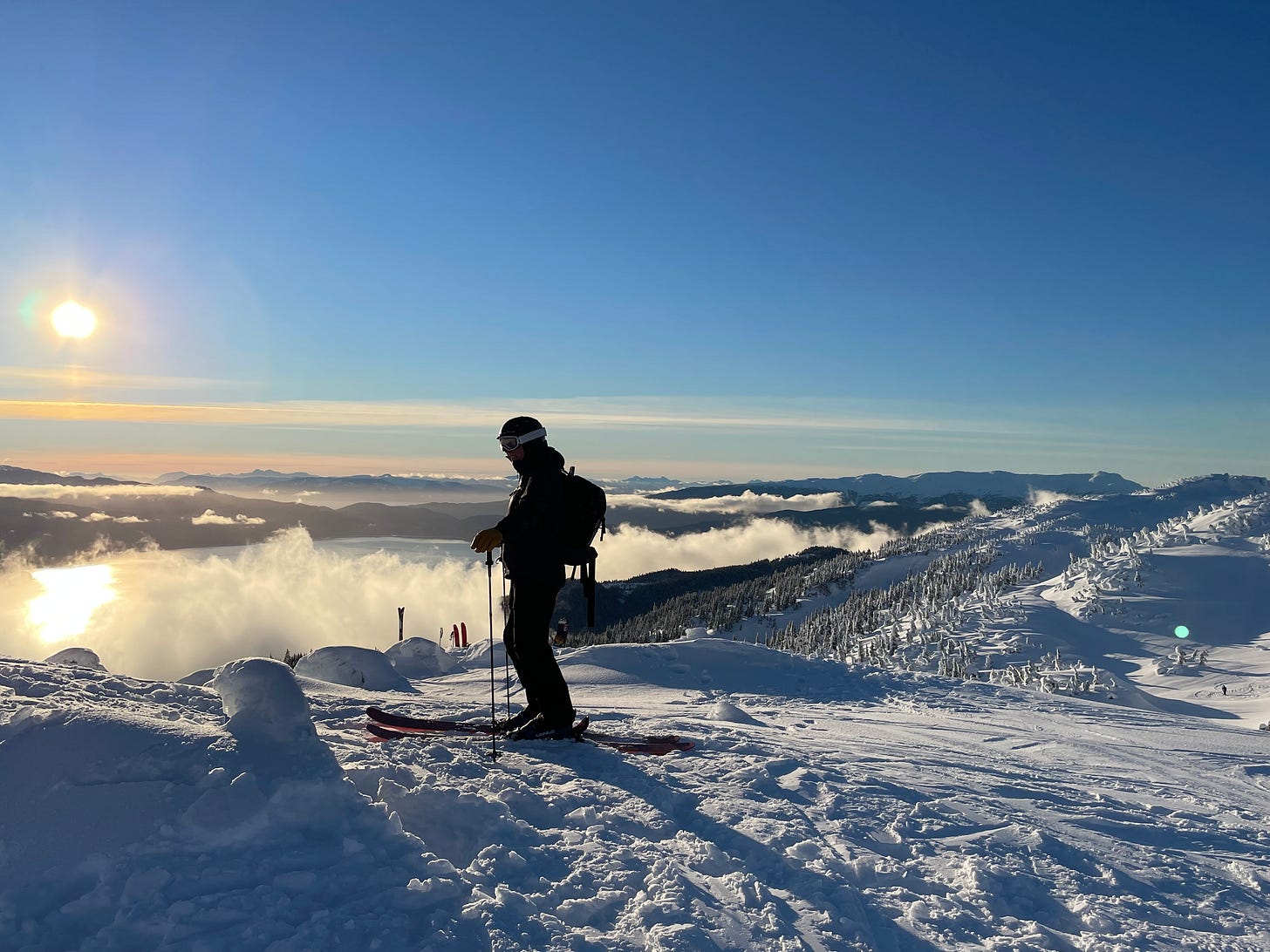Last weekend, my husband Karl and I attended a haunting and hopeful multi-media performance. Modern dancers contorted their bodies into unexpected shapes, shrugging, plodding, and rolling on the stage, at times their bodies entwined. They moved in interpretive sync to the lilting flute, pensive clarinet, explosive cello, and virtuosic violin of an “Icefield Quartet” with piano and percussion accompaniment. Above the artists towered huge rectangles at all angles, on which projections of sunsets, rippling pools of water, plants growing in the desert and blooms reminiscent of bombs were projected in brilliant, evocative colors.
The collaboration was led by Orpheus Project Artistic Director Todd Hunt and Hali Duran, choreographer for many art projects on local stages.
In the program’s opening message, Hunt writes that it is in response to the “barrage of terrible news around the world.” Or in my opinion, the worldwide disrespect, disdain, and outright destruction of entire communities of our fellow human beings; the result of greed, hubris and toxic nationalism. Yet, Hunt continues, “solace can be found in the arts and nature” the foundation for the performance, Conflict and Compassion, Hope for a World in Turmoil.
After a somber reading of a poem found on the body of a soldier killed in World War I, sopranos softly sung poems of loss during WWI and II, and the redemption of beauty offered by the natural world. The final poem was the uplifting Wounds Heal, an adaptation of the words of John Muir by Juneau screenwriter Dave Hunsaker. The final stanza:
In God’s wildness lies the hope of the world-
The great fresh unblighted, unredeemed wilderness.
The galling harness of civilization drops off,
And wounds heal ere we are aware
I am brought back to the prior weekend, where we watched Douglas-raised Haines resident Lucas Merli paint smooth waves on a canvas of white, his snowboard the brush on massive swaths of snow dotted with jagged rock faces and flanked by bottomless crevasses. It was the first segment of Outliers II, the latest work of art by Juneau professional snowboarder, producer and editor Mark Rainery.
To be honest, just watching ski and snowboard films depicting death defying descents has me somewhere between nervous and anxious. I can’t imagine how these athletes have the ability, let alone the courage.
Legendary snowboard movie pioneer Jeremy Jones maintains that transcending the fear that comes with riding this territory requires pre-planning your route, a focused, quiet mind and a keen connection to your body.
The soundtrack for Lucas’ segment by the Canadian Afiara Quartet reflected this approach. The music was more like what we heard from the Icefield Quartet than the rap or heavy metal more typical to the “ski movie” genre. Drone shots look down on the tiny spec of Lucas on the massive icefield, strings plucking gently. The camera zooms in and classical music mixed with DJ scratches rises to a vibrant intensity as he swishes along razor ridges, slashes through otherworldly snow pillows, and down alpine skyscrapers known as spines. Throughout the film, the synchronicity between the music and the absolutely breathtaking shots of the peaks, chutes and slopes of he Chilkat range is pitch perfect.
A half a lifetime ago (for them), Lucas and Mark spent a lot of time at our house, hashing out their filmmaking and editing chops as members of the middle and high school collective of snow rider-artists known as Bad Larry Productions.
Our friend Ali, one of the dancers in the Orpheus Project production, is an ER Nurse. Each First Friday art opening , theatre performance, musical event, or local film premiere is a reminder that chances are, many of the people we encounter in our daily life around here are artists with day jobs. Ali also happens to dance down the slopes of our community outdoor winter playground, Eaglecrest.
The Friday of the weekend performances of Conflict and Compassion, Hope for a World in Turmoil, Karl and our kids Kaitlyn and Kanaan spontaneously met up and hiked out to Eaglecrest’s West Bowl, not far from where the view from an alpine summit is a sea of islands. I like to think it resembles heaven, when the light is right.
That sunny day, the frozen surface of the descent had a shiny, paper thin rime crust. It produced what could be described as “a tinkling sound” when broken up by the edges of turning skis or snowboards. The resulting cascade created a small powder cloud that glistened in the fresh February light.
Perhaps its was the “galling harness of civilization” dropping off.



Katie! This is gorgeous! Your writing brought your experiences to me, and into my heart. And how did I miss the Orpheus Project performance? I didn't even know it was happening. Thank you for this.
Beautifully written Katie! Love the way you integrated your written images of art, music, dance and skiing/boarding. I am so so disappointed that I missed The Orpheus Projects latest show.